Legal Leaders: Using Technology to Gain a Competitive Advantage
/Keeping up to date on leading technology — both “legaltech” and general business solutions — is critical for law firms and in-house legal departments
As the economy recovers, the legal industry is becoming increasingly competitive. Law firms are looking for an edge, and in-house legal departments are under pressure to become leaner and more cost-efficient.
Technology is part of the solution, helping legal organizations manage operational challenges and staff shortages. And a reputation for being tech-savvy can support recruitment efforts in a tight labor market.
Here are some technology trends that are gaining ground in the legal sector.
The bare minimum: Secure remote connections
The sudden move to remote work during the pandemic shed light on the weaknesses of many organizations’ IT systems. The need to upgrade hardware, software, and networks suddenly became a top priority. Now, having a truly secure remote network and enhanced communication platforms is the baseline for conducting business. Dedicated legaltech solutions can follow that.
New, cloud-based systems made rolling out communications and project management applications across organizations easier. Because remote work poses novel cybersecurity risks, IT departments servicing law firms and companies had to make securing data a primary focus.
Since the pandemic, many interactions have been moved online, and some will remain there if the efficiencies outweigh the benefits of in-person contact. There are new ways to communicate with courts, other government parties, and clients, and even entire legal proceedings have been conducted online.
The move to digital communications also includes the expanded use of social media marketing tools. Law firms especially have benefitted from promoting their work and culture through carefully curated, professional posts on platforms such as LinkedIn.
Document automation and contract creation
Document automation platforms provide an efficient way to create and update work products, and automated, networked solutions are replacing traditional, hard-copy-based systems.
Automated, cloud-based document management systems and blockchain-enabled "smart" contracts face slower acceptance rates in the legal industry, though they are gaining some interest. Because there are still some questions in many jurisdictions about the binding legality of digital contracts, many of these solutions are still in the experimental stages. Some examples are Accord Project and Legalese.
Increased use of analytical tools and AI
Advanced analytics are also showing up in many software applications geared toward the legal industry. Lawyers are finding new ways to incorporate data analysis into their work, and these apps make running reports and creating visualizations of information relatively easy. Others use analytics for highly specific purposes, such as providing "heatmaps" of contracts to pinpoint areas of most negotiation. And many programs, particularly those concerned with practice management, incorporate relevant analytics to track key performance metrics.
Many lawyers are even using apps that analyze court data to predict the likelihood of an outcome based on the variables of a case.
Some examples of tools that incorporate AI or analytics are general-use apps like Tableau or Microsoft's PowerBi. Others include document automation, deal management, and contract management platforms. There are numerous court analytics options, depending on the practice area. And even the most recent versions of Microsoft Excel can provide more advanced data analysis functions if you know how to use them.
Leveraging technology to optimize the client experience
One of the most profitable applications of technology is using it to attract new clients and improve the satisfaction of existing accounts. The tech that enables lawyers to cultivate better relationships with their clients can prove its return on investment with every client it helps retain.
Law firms and legal departments are increasingly moving toward sophisticated customer relationship management (CRM) platforms to boost sales, marketing, and retention efforts. Organization-wide, or “enterprise,” CRMs provide a single source for maintaining client history, accessing integrated billing systems, and streamlining communications.
Solutions geared especially toward law firms include Intapp and InterAction. And Salesforce is a leading CRM among large corporations.
The latest technology offers greater efficiencies and capabilities, but only legal leaders can ensure it is carefully chosen and implemented. End-user training is essential, as is the full cooperation and support of a dedicated IT team. But done right, the addition of leading tools can drastically improve an organization.
Carrington Legal Search is celebrating 20 years in business: we were in the trenches with our clients during 9/11 and 2008. We partner with our clients to identify leaders and mission-critical talent to shore up and grow companies even during the most challenging times. We are here for you! To make our nationwide network work for you, get in touch at 512-627-7467 or email carrie@carringtonlegal.com.


